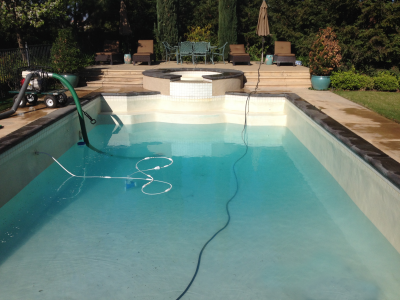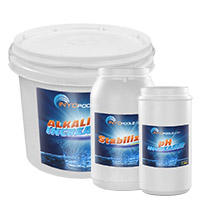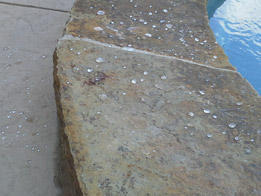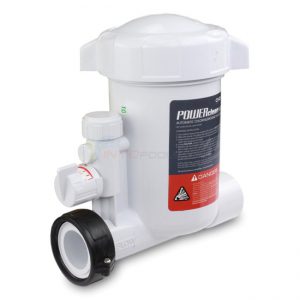This may come as a surprise to some, but not everyone loves salt chlorine generators. Each pool owner has their reasons for not liking salt pools. Some people experience rusting, others have softstone decks, or just don’t like plunking down a few hundred dollars for a replacement cell. No matter what the reason is, these pool owners want the easiest way of converting their pool from saltwater to traditional chlorine, a.k.a. freshwater.
In this article, we will discuss the water chemistry and hardware hurdles to overcome when making the switch. But the question asked most often is the following:
Do I have to drain my pool?
Not entirely, but you will be draining a portion of your pool’s water that will be replaced with fresh water to lower the cyanuric acid (CYA) levels. The chemical CYA is sometimes referred to as stabilizer. Chlorine created by salt generators is a pure form, meaning salt pools require of you to add CYA to protect the chlorine. A salt pool’s CYA levels hover around 80-90 parts per million (ppm), whereas chlorine pools should be about half that at 40 ppm.
CYA, unlike chlorine, does not dissipate from pool water. So, to lower your CYA, you must drain a portion of your pool and then refill with fresh water. A good method of draining is the percentage method. If your CYA level is 80 ppm and you want it at 40 ppm, drain about 50 percent of your water.
For you folks in areas with high water tables, like us Floridians, be mindful of when you drain the pool. Do not drain your pool in the rainy season or after periods of heavy rain, or you may pop your pool.
Balancer Chemicals for Traditional Chlorine

You will essentially be continuing your regiment of testing pH, alkalinity, and hardness, applying pool chemicals as needed. You can probably chuck your bottles of CYA, because tablets and liquid chlorine contain stabilizer within their formulas.
For a guide on pool chemistry, follow this link: How To Maintain A Swimming Pool Part 1 (Chemicals).
Will residual salt affect my pool?
No, the leftover salt in your pool water does not pose a danger to your pool equipment. The electrolysis created by the reaction to the salt cell is what caused most of the corrosion in your pool, not the salt itself. Without the cell, the salt will be relatively harmless.
And before you fire up the keyboards talking about the corrosiveness of seawater, be aware that seawater contains 35,000 ppm salinity level, and your pool water has about 3,500 ppm tops. After you have purged so much water to lower your CYA, your pool water’s salinity level will be a fraction of the 3,500 ppm.
Picking a Chlorinator

We cover the pros and cons of various types of chlorinators in the video above. I have it cued to the section explaining the differences between the three main choices which are floating, in-line, and off-line chlorinators.
For the in-line and off-line types, the biggest concern will be location and spacing. Chlorinators should be the last piece of equipment on your plumbing line, after your filter, gas heater or solar panels. So, you will need to find a spot with straight pipe that is long enough and with enough clearance above and below to install and service the chlorinator.
Regular flow-through salt cells like the Intellichlor, AquaRite, and Pureline are long enough for an in-line chlorinator to be slotted in its place. If your equipment pad is a tight squeeze or your cell has an odd configuration like a CompuPool or Jandy AquaPure Ei, an off-line chlorinator will be the better choice. It requires a small hole to tap the plumbing line and for the return feeder line. And it can be set beside the equipment pad instead of on the pipe.
Removing and installing equipment
Removing the old salt system is pretty simple and most would follow these three steps:
- Shut off the power to the control box, then unmount it.
- Remove the flow switch from the tee mount, plug the tee tap or remove the tee and replumb the section.
- Unscrew the cell from the plumbing line.
If you have one of those flow through cells like the Hayward AquaRite, then those steps are simple. But if you have a CompuPool upside down U-shape or the AutoPilot manifold design, the removal of the cell and associated piping will likely require some PVC elbow grease.













Leave a Reply